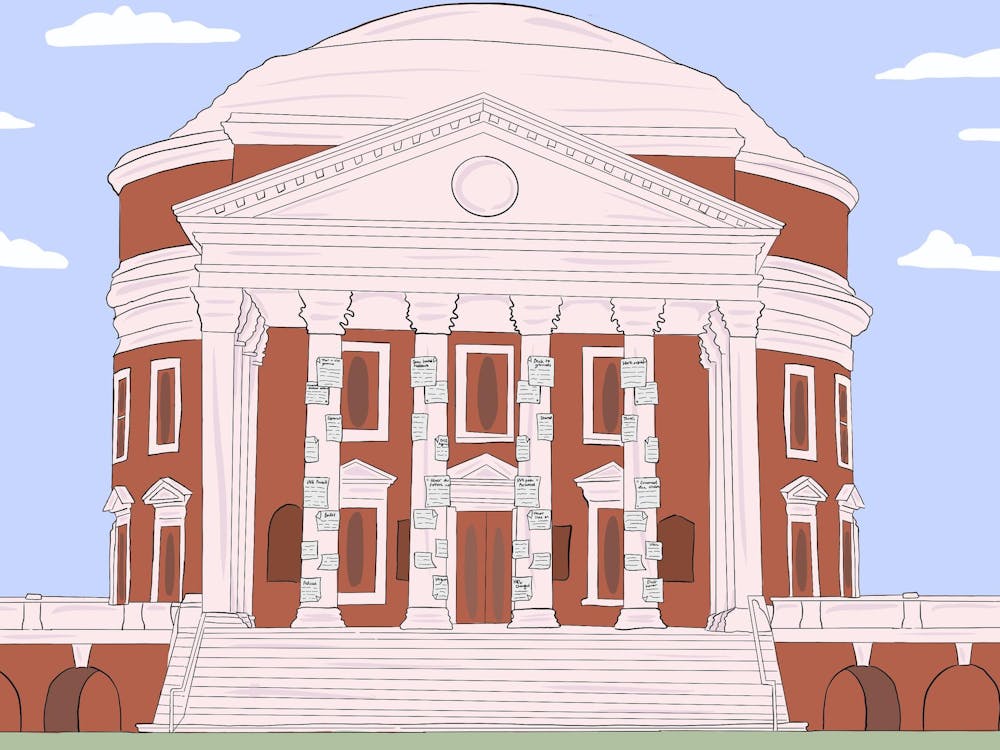On any given day, there is a student or faculty member raving about the magnificent history of our University. From being among the highest-ranking universities in the country to being created by the author of the Declaration of Independence, the University has a history that is certainly worth the acclamation that it receives.
Knowing the pride that comes with the University’s history, it is troubling that people so often shy away from the topic of slavery. Slavery played an incredibly large role in the University’s creation and early existence. This remarkable place that we all know and love would not be the same place without slave labor, as hard as that is to admit. As members of the University — whether a custodian, a student, or a dean — it is our responsibility to acknowledge and pay our respects to not only the founder of the University, but also to each and every person that contributed to who we are today.
Without the opportunity to hear a timely lecture given in my Hebrew Bible class by Professor Halverson-Taylor, I would have never known the complex back-story that accompanies the South Lawn. As she informed our class about her experience with slavery at the University, the faces of students all across the room were in complete shock. We had no idea what actually happened on the very ground where we regularly stood. After the building process for the South Lawn project started: a dozen graves were found immediately, and two more in 2005. The graves belonged to a community of formerly enslaved African-Americans who did University students’ laundry.
Another graveyard was found just north of the University cemetery in 2012 that was believed to include many slave graves. This opened the door — which had been closed for many years — for conversation about the reality of slave labor on Grounds.
Naturally, people began to ask questions: Who were these people? What role did they play at our University? What do we do next? These are all compelling and complex questions. It is not easy to uncover such uncomfortable truths. It is easy to want to push these findings away to avoid making our history of utilizing slave labor part of the University’s legacy. On the other hand, do we want to be known as the school that ignores and hides its past? It is cowardly to turn away and pretend that slavery has not affected our university.
Spread out across Grounds there are small plaques and memorials dedicated to the slave graveyards that the University has since built over. But the administration’s memorial efforts mean little if we do not actively integrate our past into our present. The Board of Visitors’ Rector Thomas Farrell wrote an editorial for the Richmond Times-Dispatch in 2007 saying the Board would “begin to address the future with a new sense of clarity, purpose, and strength,” and even the Virginia General Assembly passed a resolution apologizing for the state’s role in the slave trade. In theory, this was a great idea, but most people had no idea the resolution was ever passed. Frank Dukes, architecture professor and co-instructor of a course titled “U.Va. History: Race and Repair,” points out that “there was actually more resentment than the sense that [the resolution] was a good thing. People felt that words without actions are meaningless.”
There are many people on Grounds who will never be aware of the role slavery has played here at our University. At the times that we are learning all about the University’s conception, such as Convocation or various opening ceremonies, instead of praising Thomas Jefferson for writing the first recipe for ice cream, we should be learning about the people that were treated as property and worked under excruciating circumstances to build the beautiful campus that we all know and love. While prospective students are learning about the eerie secret societies that accompany the University, they should also be learning about the fact that Gooch-Dillard was built on top of a slave graveyard.
Let us take our past misfortunes and transform them into our present victories. We do not have to stand in the shadows of slavery, but rather should use our knowledge and act upon our Community of Trust to ensure people all around the world know the University will not ignore its history.
Lauren Horne is a Viewpoint Writer.






